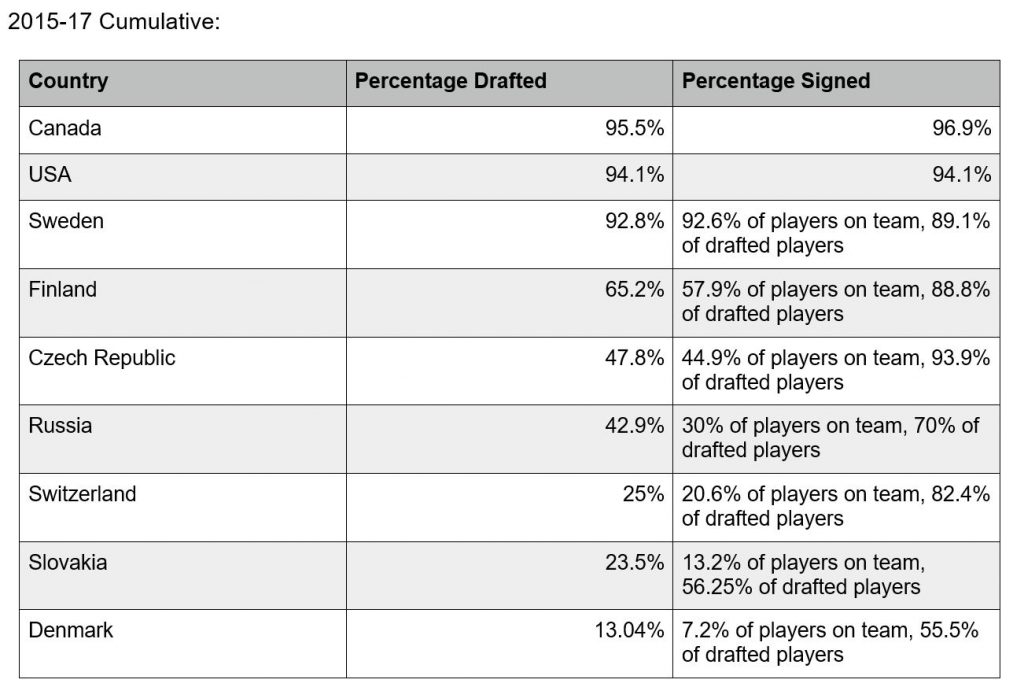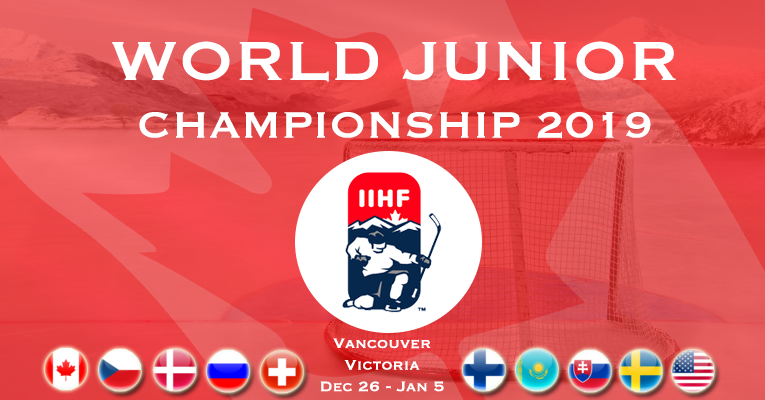The Future Career of IIHF World Junior Championship Players: How many are NHL drafted and signed to a NHL entry-level?
Each year some of the top U20 players in the world compete in the IIHF World Junior Championship. The tournament consists of teams from the largest hockey markets in the world.
As much as playing in the tournament brings the pride in representing your country, as an organization we wanted to know how it effects their career and more specifically, how many were NHL drafted and inevitably signed to NHL entry level contracts (ELC’s).
So we analyzed the 2015-2017 team rosters for the US, Canada, Sweden, Finland, Czech Republic, Russia, Slovakia, Switzerland, and Denmark.
The results were interesting…

Some of the immediate trends identified were:
- 94-96% of players from the US and Canada were both signed and drafted
- 30% less Finnish players were drafted in comparison to Canada; while only 57.9% of players overall actually signed ELC’s
- 47.8% of Czech and 42.9% Russian players were drafted, while 14.9% more Czech players actually signed ELC’s
- Of those Swiss players drafted, 12.4% more signed ELC’s in comparisons to Russians
- Of those players drafted from Slovakia and Denmark, only 55-56% signed ELC’s
- US, Canada, and Sweden produced more NHL Draft picks than the entire remaining teams combined
What does it mean?
- Finnish players may be undervalued both in the NHL drafting and signing process
- The ‘KHL effect’ may be lowering the amount of drafted Russian players signing ELC’s; therefore they may be overvalued in the drafting process
- Swiss, Slovak, and Danish players are are drafted 4-7x’s less then Canadian’s or Americans; while are 5-13x’s less likely to sign ELC’s overall
Where’s the value?
Alternatively, these trends are important to the specific hockey federations themselves in understanding how they stack up in producing NHL level talent. I can only hope a report like this might beg the question of, “what can we do differently to produce more NHL prospects?”, as well as, “why are the number the way they are?”.
I hope this statistical look at the careers of World Junior players offers a glimpse at the landscape of NHL prospects, while offering insight into how we think and use data to identify trends as a player agency.
Data and Analysis by Dara Festinger

